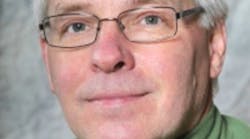San Francisco, CA. “What makes someone a serial innovator?” That’s the question addressed by Melissa Schilling, Ph.D., John Herzog Family Chair Professor of Management at New York University. She delivered a SEMICON West keynote address Tuesday morning titled “Breakthrough Innovators Who Changed the World.”
Innovation is a much-discussed, yet poorly understood concept. A propensity for innovation may arise within an individual, it may be promoted by an organization with which the innovator works, or it may result from outside forces—nature, nurture, or luck, Schilling said, noting it may involve all three. Once we understand what makes someone a serial innovator, we can instill a propensity for innovation in our own personal and work lives, she said.
To study the issue, Schilling developed a research protocol involving case studies of eight historical and contemporary innovators, ranging from Benjamin Franklin to Elon Musk. Marie Curie was the only woman on the list.
“It’s not a great time to write a book about seven white men,” she said. But she wanted to avoid a diversity trap that would lead her to alter her protocol, in which case she would no longer be doing science. She placed the lack of diversity in the historical context of challenges facing women, noting that Curie had to move to a country that would let women attend college.
Schilling found four themes in the lives of serial innovators, the first being a sense of separateness. Einstein, for example, expressed a love for humanity but not individuals. The feeling seemed to be mutual. His professors didn’t like him, and he became a patent examiner when unable to get an appointment at a university. Marie and Pierre Curie wanted to be removed from humans so they could focus on science. Their daughter, Eve Curie, wrote a biography in which she described pining for parental affection.
Schilling noted that contrary to popular belief, brainstorming is not a great way to foster innovation. Compromises get made to achieve consensus. That leads to the second theme Schilling identified: self-efficacy. With NASA not willing to develop reusable rockets and unenthusiastic about going to Mars, Elon Musk decided to undertake these initiatives himself. Nicola Tesla got the idea for hydropower on seeing a drawing of Niagara Falls at age 14. Serial innovators tend to be unorthodox and embrace weirdness, Schilling said.
The third theme Schilling identified involves serial innovators’ having a goal that matters more to them than money, reputation, health, or family. For example, Franklin severed relations with his son, a British loyalist. Elon Musk is forgoing the potential profits that could come from taking SpaceX public because shareholder demands might hinder his ambition of reaching Mars.
The fourth theme Schilling identified involves timing and luck. Steve Jobs, for example, said he felt lucky to be at the right place and right time for the personal computer to take shape. Schilling noted that many things had to fortuitously occur to bring Silicon Valley into existence. “Sometimes you need to go where the action is,” she said. “Ideas from individuals get enacted by teams.”
For more on the topic, read Schilling’s book Quirky: The Remarkable Story of the Traits, Foibles, and Genius of Breakthrough Innovators Who Changed the World.

